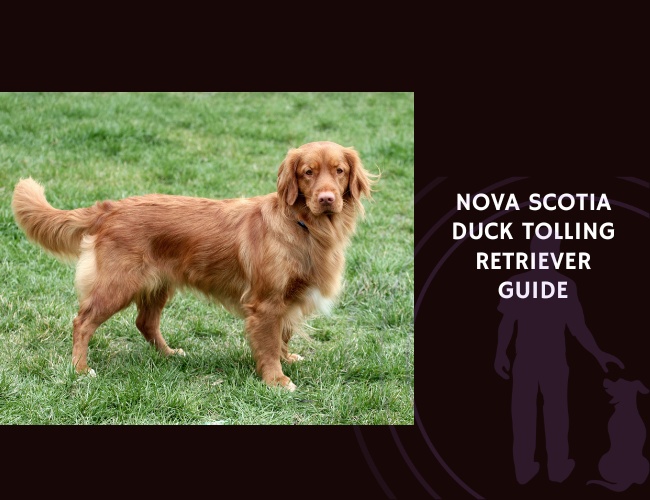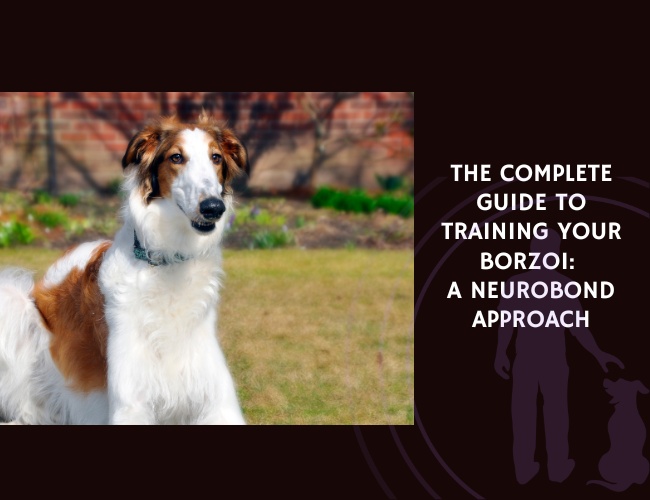Introduction: Meeting Canada’s Best-Kept Secret
Picture a fox-like figure dancing along the shoreline, its flowing red coat catching the morning sun as curious waterfowl swim closer to investigate. This isn’t a wild fox at play—it’s the Nova Scotia Duck Tolling Retriever, Canada’s smallest retriever with perhaps the biggest personality. Born from the innovative minds of 19th-century Nova Scotian hunters, these remarkable dogs revolutionized waterfowl hunting through their unique “tolling” technique, a mesmerizing display that would make any duck or goose pause in wonder.
You might notice that your first encounter with a Toller (as enthusiasts lovingly call them) leaves you slightly puzzled. Are they a small Golden Retriever? A fox in disguise? The answer is neither—they’re something entirely unique. With their intelligent amber eyes, fox-red coat, and that distinctive white-tipped tail that waves like a flag of friendship, Tollers represent a perfect storm of beauty, brains, and boundless energy that has captured hearts far beyond their Maritime homeland.
Let us guide you through understanding this exceptional breed, from their fascinating behavioral quirks to their specific care needs. Whether you’re already sharing your life with one of these copper-colored dynamos or considering welcoming one into your home, you’ll discover why Toller owners often say, “Once you go red, you never go back.” 🧡
Character & Behaviour: Understanding Your Toller’s Mind
The Historical Blueprint: How Purpose Shaped Personality
Understanding your Nova Scotia Duck Tolling Retriever begins with appreciating their remarkable origin story. Developed in the Little River district of Nova Scotia in the early 1800s, these dogs weren’t just bred to retrieve—they were designed to perform something far more sophisticated. Local hunters had observed foxes using their bright coloring and playful movements to lure curious waterfowl within range, and they wondered: could a dog be trained to do the same?
The word “tolling” comes from the Middle English “tollen,” meaning to entice or lure, and that’s exactly what these dogs were bred to do. This unique hunting method required dogs with very specific traits: they needed to be playful enough to maintain animated movement for extended periods, intelligent enough to understand complex hunting sequences, and focused enough to ignore their prey drive until the perfect moment. These requirements fundamentally shaped every aspect of the Toller personality you see today.
What this means for you as an owner is that your furry friend comes pre-programmed with behaviors that might seem quirky but are actually centuries of selective breeding at work. That obsessive ball-fetching? It’s tolling behavior. The way they prance and dance when excited? That’s the movement that once lured ducks to shore. Even their famous “Toller scream”—that piercing vocalization of pure excitement—served a purpose in the field.
Temperament Profile: The Toller Personality Decoded
Living with a Nova Scotia Duck Tolling Retriever feels like having a canine comedian, athlete, and Einstein rolled into one fox-like package. These dogs possess what many describe as a “split personality” in the best possible way—they can be intensely focused working dogs one moment and silly, affectionate clowns the next.
The Intellectual Side Your Toller’s intelligence isn’t just about learning commands quickly (though they certainly do that). It’s a creative, problem-solving intelligence that can sometimes catch you off guard. You might find them figuring out how to open doors, creating their own games, or even attempting to train you through clever manipulation. This cognitive flexibility means they need mental stimulation just as much as physical exercise.
The Emotional Intelligence Tollers are remarkably attuned to human emotions, often adjusting their behavior based on your mood. Feeling down? Your Toller might bring you their favorite toy or curl up quietly beside you. Ready for adventure? They’ll match your energy with enthusiasm that seems to have no bounds. This emotional sensitivity makes them wonderful therapy and service dogs, but it also means they can absorb household stress.
The Social Butterfly… With Conditions Unlike their Golden Retriever cousins who greet everyone like a long-lost friend, Tollers tend to be more selective with their affections. They’re often described as “aloof” with strangers, but this isn’t unfriendliness—it’s discernment. Your Toller is simply taking time to assess new people, and once someone passes their evaluation, they’re accepted into the inner circle with typical Toller enthusiasm.
Energy Dynamics: Understanding the On/Off Switch
One of the most fascinating aspects of Toller behavior is their remarkable ability to shift between energy states. Owners often describe it as having a dog with an “on/off switch” rather than a dimmer. This isn’t hyperactivity—it’s adaptive behavior rooted in their hunting heritage.
The “On” Mode When engaged in activity, whether it’s playing fetch, swimming, or participating in dog sports, your Toller demonstrates seemingly inexhaustible energy. They can retrieve a ball for hours, showing the same enthusiasm on the 100th throw as they did on the first. This sustained focus and energy were essential for the tolling process, which could last for extended periods.
The “Off” Mode What surprises many new Toller owners is how these energetic dogs can transform into content couch companions when their exercise needs are met. A well-exercised Toller is perfectly happy to spend hours napping at your feet or watching Netflix with you. This adaptability makes them suitable for active families who also enjoy quiet evenings at home.
Managing the Energy Balance The key to a happy Toller household is understanding that their energy isn’t optional—it needs an outlet. Without adequate physical and mental stimulation, that energy doesn’t disappear; it redirects into behaviors you might find less charming, like redesigning your garden or creating modern art from your favorite shoes.
The Famous Toller Scream: Decoding This Unique Vocalization
Nothing quite prepares you for your first experience with the “Toller scream.” This high-pitched, penetrating vocalization can sound alarming to the uninitiated—somewhere between excitement and emergency. But understanding this unique trait helps you appreciate it as part of your dog’s communication repertoire.
What Triggers the Scream The Toller scream typically emerges during moments of high excitement or anticipation. Common triggers include:
- Seeing their leash when a walk is imminent
- Watching you prepare their food
- Spotting waterfowl or other prey animals
- Greeting beloved family members after separation
- Anticipating their favorite activities
Managing Vocal Expressions While you can’t (and shouldn’t try to) eliminate this breed characteristic entirely, you can manage it through training. Teaching a “quiet” command and rewarding calm behavior helps your Toller learn when vocalization is appropriate. Remember, this scream served a purpose in hunting, so it’s deeply ingrained—approach it with patience and understanding rather than frustration.
Training & Education: Shaping Your Clever Companion
Early Socialization: Building Confidence from Puppyhood
Your Nova Scotia Duck Tolling Retriever puppy arrives with incredible potential, but like a rough diamond, they need careful shaping to reveal their best qualities. The critical socialization window—roughly 3 to 14 weeks of age—sets the foundation for your dog’s entire future temperament.
During this crucial period, your goal is to create positive associations with as many different experiences as possible. This means exposing your puppy to various surfaces (grass, concrete, sand, water), sounds (traffic, appliances, other animals), and most importantly, different types of people. Remember, Tollers naturally tend toward reservation with strangers, so extra effort here pays dividends later.
The Socialization Checklist Create a systematic approach to socialization. Aim for your puppy to meet at least 100 different people before they’re 16 weeks old—people wearing hats, uniforms, using mobility aids, of different ages and ethnicities. Each positive interaction builds your Toller’s confidence bank account, creating a dog who’s discerning rather than fearful.
But here’s where Toller socialization differs from other breeds: you’re not aiming to create a dog who loves everyone indiscriminately. Instead, you’re teaching them that strangers are safe and non-threatening, even if they don’t feel compelled to befriend every person they meet. This respects their natural temperament while ensuring they’re well-adjusted.
Positive Reinforcement: Speaking Your Toller’s Language
Traditional dominance-based training methods are not just ineffective with Tollers—they’re counterproductive. These sensitive, intelligent dogs shut down when faced with harsh corrections or intimidation tactics. Instead, they flourish under positive reinforcement that engages their problem-solving abilities and desire to please.
The Five-Minute Rule Tollers have laser focus when engaged but can become bored with repetitive drilling. Keep training sessions to 5-10 minutes, but conduct them 3-5 times daily. This approach maintains their enthusiasm while building consistent habits. Think of it as educational snacking rather than force-feeding—small, frequent doses of learning that your dog eagerly anticipates.
Making It a Game Transform every training session into a game, and you’ll have a Toller who begs to learn. Teaching “sit”? Make it a race—who can sit fastest when you stop walking? Learning “stay”? Turn it into hide-and-seek where staying earns them the reward of finding you. This playful approach taps into their natural joy and keeps their brilliant minds engaged.

Retrieving Excellence: Channeling Natural Instincts
Your Toller comes pre-programmed with retrieving instincts that would make other breeds envious. But raw instinct needs refinement to become reliable behavior. The journey from puppy who chases balls to skilled retriever follows a predictable path when you understand how to guide it.
Building the Foundation Start with two identical toys. When your puppy grabs one, immediately make the other more interesting through movement and excitement. This teaches the fundamental trade that becomes the retrieve. Never chase a puppy who won’t bring the toy back—you’re simply teaching them that keep-away is more fun than retrieving.
Water Introduction Most Tollers are natural water dogs, but proper introduction ensures confidence rather than fear. Start with shallow water on warm days, entering the water yourself to show it’s safe. Toss floating toys just out of reach, gradually increasing distance as confidence grows. Many Tollers will launch themselves into water with abandon once they understand it’s another playground.
Advanced Retrieving Skills As your Toller masters basic retrieves, introduce complexity. Multiple retrieves, blind retrieves (where they didn’t see the object fall), and directional commands transform a simple game into mental gymnastics. This isn’t just training—it’s providing the mental stimulation your intelligent dog craves.
Impulse Control: Teaching Patience to Your Perpetual Motion Machine
Perhaps the greatest training challenge with Tollers is teaching them that immediate gratification isn’t always available. Their enthusiasm for life can overwhelm their self-control, leading to jumping, grabbing, and general over-excitement. But with consistent work, even the most exuberant Toller can learn impressive self-control.
The Wait Command “Wait” becomes your most valuable tool. Use it before meals, at doors, before throwing toys, and during any transition. Start with one-second waits, gradually building duration. Your Toller learns that patience unlocks rewards, creating a dog who looks to you for permission rather than taking what they want.
Calm Behaviors Earn Rewards Revolutionize your Toller’s behavior by rewarding calmness more than excitement. That quiet sit while you prepare dinner? Treat. Lying quietly while you work? Praise and pet. By making calmness profitable, you teach your dog that relaxation has value too.
Physical Care & Exercise: Maintaining Your Athletic Partner
Daily Exercise Requirements: More Than Just Physical
Your Nova Scotia Duck Tolling Retriever needs at least 60-90 minutes of dedicated exercise daily, but understanding the quality of that exercise matters more than just watching the clock. These dogs need variety, challenge, and purpose in their physical activities.
The Morning Ritual Start your Toller’s day with 30-45 minutes of vigorous exercise. This might be a run, an intense fetch session, or swimming if you have access to water. Morning exercise sets the tone for the entire day, creating a calm, satisfied dog who can handle the lower activity periods that follow.
Mental Exercise Integration Physical exercise alone won’t tire your clever Toller. Incorporate training, puzzle toys, or scent work into your exercise routine. A 20-minute training walk where your dog practices heeling, recalls, and tricks can be more exhausting than an hour of mindless running.
The Evening Wind-Down End your day with another 30-45 minute session, but make this one slightly less intense. A leisurely walk with plenty of sniffing opportunities, a gentle swim, or a training session helps your Toller transition to evening relaxation mode.
Swimming: Your Toller’s Natural Element
Water work isn’t just exercise for Tollers—it’s a return to their ancestral purpose. Most Tollers display an almost magnetic attraction to water, from puddles to oceans, and swimming provides the perfect low-impact, high-intensity workout.
Safe Water Introduction Even water-loving Tollers benefit from proper introduction. Choose calm, shallow water for first experiences. Enter the water yourself to demonstrate safety, and use floating toys to encourage exploration. Never force or throw a reluctant dog into water—trust must be built, not demanded.
Swimming as Therapy For Tollers recovering from injury or dealing with joint issues, swimming provides incredible therapeutic benefits. The buoyancy reduces joint stress while the resistance builds muscle. Many veterinary rehabilitation centers now offer hydrotherapy specifically because of these benefits.
Dog Sports: Channeling Drive Into Achievement
Your Toller’s combination of athleticism, intelligence, and drive makes them natural competitors in virtually every dog sport. Participation in organized activities provides structure, mental stimulation, and an outlet for their considerable energy.
Agility: The Perfect Toller Sport Agility seems designed for Tollers. It combines speed, intelligence, and handler focus—all Toller strengths. Start with foundation skills like targeting, body awareness, and impulse control before introducing equipment. Many Tollers excel at national and international levels in agility.
Dock Diving: Embracing Their Heritage Dock diving celebrates everything Tollers were bred to do—run, jump, swim, and retrieve. This sport requires minimal training beyond basic retrieving skills and provides incredible exercise. Watching your Toller launch themselves off a dock in pursuit of their toy is witnessing pure joy in motion.
Flyball and Disc Sports These high-energy sports satisfy your Toller’s need for speed and retrieving. Flyball adds a team element that many Tollers enjoy, while disc sports allow for creative choreography and bonding between handler and dog.
Clever. Driven. Discerning.
Purpose shapes their play. Centuries of selective breeding for the tolling hunt gave the Nova Scotia Duck Tolling Retriever their boundless energy, sharp mind, and signature “on/off” work ethic.
Emotion fuels connection. Tollers read human moods with uncanny accuracy, adjusting their behaviour to match your energy while forming deep, loyal bonds with those they trust.



Stimulation keeps harmony. Balanced exercise, mental challenges, and early, thoughtful socialization channel their intelligence into cooperation—preventing boredom from becoming creative mischief.
Nutritional Excellence: Fueling Your Energetic Companion
Understanding Toller Nutritional Needs
Your Nova Scotia Duck Tolling Retriever’s nutritional requirements reflect their unique combination of moderate size and high activity level. These dogs burn calories like athletes but don’t have the large stomach capacity of bigger breeds, making nutrient density crucial.
Protein Requirements Active Tollers thrive on diets containing 26-30% high-quality protein. This supports their muscle development and recovery from exercise. Look for named meat sources (chicken, salmon, lamb) as the first ingredients, avoiding generic “meat meals” or by-products.
The Fat Factor Healthy fats provide concentrated energy for your active Toller. Omega-3 fatty acids from fish oil support joint health—crucial for this active breed—while also maintaining their distinctive double coat’s luster. Aim for foods with 15-18% fat content for active adults.
Carbohydrate Considerations While not essential, digestible carbohydrates provide sustained energy for your Toller’s activities. Sweet potatoes, brown rice, and oats offer steady energy release without the blood sugar spikes that can lead to hyperactivity followed by crashes.
Life Stage Nutrition: From Puppy to Senior
Puppy Power (0-12 months) Toller puppies require careful nutritional management to support rapid growth without encouraging joint problems. Feed a high-quality puppy food with 28-32% protein and increased calcium and phosphorus for bone development. Divide daily portions into 3-4 meals to prevent bloat and maintain steady energy.
Monitor your puppy’s body condition carefully—Tollers should grow lean and athletic, not chubby. Excess weight during growth phases stresses developing joints, potentially leading to hip dysplasia or other orthopedic issues later.
Adult Maintenance (1-7 years) Adult Tollers’ nutritional needs vary dramatically based on activity level. A competitive agility dog might need 30% more calories than a casual companion. Adjust portions based on body condition, not just the feeding guide on the bag.
Senior Support (7+ years) As your Toller ages, their metabolism slows while their need for joint support increases. Transition to senior formulas enriched with glucosamine, chondroitin, and increased antioxidants. These nutrients support cognitive function and help maintain quality of life through the golden years.
Special Dietary Considerations
Food Sensitivities Some Tollers develop food sensitivities, often manifesting as chronic ear infections, excessive paw licking, or gastrointestinal upset. If you notice these symptoms, consider an elimination diet using novel protein sources (venison, duck, rabbit) and limited ingredients to identify triggers.
The Raw Debate Many Toller owners report excellent results with raw diets, citing improved coat condition, higher energy, and better dental health. If considering raw feeding, research thoroughly and consult with a veterinary nutritionist to ensure balanced nutrition.
Supplement Support Even high-quality commercial foods might benefit from supplementation. Fish oil supports joint and coat health, probiotics aid digestion, and glucosamine/chondroitin provides extra joint support for active dogs. Always introduce supplements gradually and monitor for any adverse reactions.
Health & Wellness: Protecting Your Toller’s Future
Understanding Breed-Specific Health Concerns
While Nova Scotia Duck Tolling Retrievers are generally healthy dogs with a life expectancy of 12-14 years, awareness of potential health issues helps you provide proactive care. Knowledge isn’t meant to cause worry—it’s a tool for prevention and early intervention.
Autoimmune Challenges The Toller community faces a concerning reality: autoimmune conditions affect the breed more frequently than many others. Steroid-Responsive Meningitis-Arteritis (SRMA) typically appears before age two, causing fever, neck pain, and reluctance to move. While treatable with steroids, early recognition is crucial.
If your young Toller suddenly seems painful, particularly when moving their head, or develops a fever without obvious cause, seek immediate veterinary attention. The good news? With proper treatment, most affected dogs recover completely and live normal lives.
Hip Dysplasia: A Manageable Risk While hip dysplasia occurs in Tollers, it’s less common than in many retriever breeds. Responsible breeders screen parents, significantly reducing incidence. You can further minimize risk by maintaining ideal body weight, providing appropriate exercise during growth, and avoiding repetitive high-impact activities in puppies.
Progressive Retinal Atrophy (PRA) This inherited condition affects about 7% of Tollers but is carried by 40% of the population. PRA causes gradual vision loss, eventually leading to blindness. While there’s no treatment, affected dogs adapt remarkably well to vision loss in familiar environments. Genetic testing identifies carriers and affected dogs, helping breeders make informed decisions.
Preventive Care Strategies
The Exercise Balance Proper exercise prevents many health problems, but overdoing it—especially in puppies—can cause lasting damage. Follow the “five minutes per month of age” rule for structured exercise in puppies. A four-month-old puppy should have no more than 20 minutes of structured exercise twice daily, though free play is unlimited.
Weight Management Maintaining ideal body condition might be the single most important thing you can do for your Toller’s long-term health. You should easily feel ribs with light pressure, see a defined waist from above, and notice an abdominal tuck from the side. Extra weight stresses joints, heart, and organs, potentially shortening lifespan by years.
Dental Health Tollers are prone to dental disease, which can affect overall health through bacterial spread to organs. Daily brushing, dental chews, and regular professional cleanings prevent problems. Start dental care in puppyhood to create acceptance of handling.

Grooming & Coat Care: Maintaining That Fox-Red Glory
Understanding the Double Coat
Your Toller’s distinctive double coat isn’t just beautiful—it’s functional. The soft, dense undercoat provides insulation, while the water-repellent outer coat protects against elements. This coat requires specific care to maintain its health and appearance.
Seasonal Shedding Cycles Tollers shed year-round with two major “coat blows” annually. During these periods, undercoat comes out in clumps, and you might wonder how your dog isn’t bald. Daily brushing during shedding season prevents mat formation and reduces household tumbleweeds.
Brushing Techniques Use a slicker brush for regular maintenance, working in sections from skin outward. During shedding season, an undercoat rake removes loose fur more efficiently. Pay special attention to areas that mat easily: behind ears, armpits, and rear feathering.
Bathing and Water Activities
The Self-Cleaning Coat Toller coats are remarkably self-cleaning. Mud dries and falls off, and the water-repellent quality means they dry quickly after swimming. Bathe only when necessary—typically every 2-3 months unless they find something particularly fragrant to roll in.
Post-Swimming Care After swimming, especially in chlorinated or salt water, rinse thoroughly with fresh water. Check and dry ears to prevent infections. The coat should air-dry naturally when possible, maintaining its protective qualities.
Lifestyle Integration: Is a Toller Right for You?
The Ideal Toller Home
Before welcoming a Nova Scotia Duck Tolling Retriever into your life, honest self-assessment prevents future heartache. These dogs thrive in specific environments and struggle in others.
Activity Level Requirements You don’t need to be a marathon runner, but you do need to be consistently active. Can you commit to 60-90 minutes of daily exercise, rain or shine? Do you enjoy outdoor activities where your dog can participate? If exercise feels like a chore rather than a joy, a Toller might not be your ideal match.
Space Considerations While Tollers can adapt to apartment living with sufficient exercise, they flourish with access to secure outdoor space. A fenced yard provides opportunities for safe play and training. However, a bored Toller can turn any yard into an excavation site, so space alone isn’t enough—engagement is essential.
Family Dynamics Tollers generally excel in families with children old enough to respect boundaries and participate in care. Their energy matches that of active kids, and they form strong bonds with all family members. However, their exuberance might overwhelm toddlers, and their herding instincts occasionally manifest as heel-nipping with running children.
Time and Commitment Considerations
The Training Investment Tollers need ongoing mental stimulation throughout their lives. Can you commit to continuing education, whether through formal classes, dog sports, or daily training games? A bored Toller becomes destructive, anxious, or develops problematic behaviors.
Social Needs While not velcro dogs like some breeds, Tollers need substantial human interaction. They don’t thrive as backyard dogs or with families gone 12 hours daily. If your lifestyle involves extensive travel or long work hours, consider whether you can provide adequate companionship.
Financial Responsibilities Beyond initial purchase price, budget for quality food ($50-100 monthly), regular veterinary care, training classes, and potential health issues. Active dogs also wear through toys, leashes, and equipment faster. Dog sports, if you choose to participate, involve entry fees, equipment, and travel costs.
The Toller Community Connection
Finding Your Tribe One of the joys of Toller ownership is joining a passionate, supportive community. Local Toller clubs organize meet-ups, training days, and events where your dog can socialize with their own kind—and you can connect with people who understand why you have 47 photos of your dog on your phone.
Breed-Specific Resources The Nova Scotia Duck Tolling Retriever Club provides invaluable resources for owners. From health research updates to training tips specific to Toller quirks, staying connected to the breed community enhances your journey.
Senior Years: Caring for Your Aging Toller
Recognizing the Changes
Your perpetual motion machine will one day slow down, though Tollers often maintain puppy-like enthusiasm well into their senior years. Around age 7-8, subtle changes emerge that require adjusted care strategies.
Physical Adaptations You might notice your Toller takes longer to warm up for activities or seems stiff after rest. They might hesitate before jumping into the car or climbing stairs. These changes don’t mean retirement from activities—they mean modification for comfort.
Cognitive Considerations Senior Tollers might experience “cognitive dysfunction syndrome,” similar to human dementia. Signs include disorientation, changes in sleep patterns, or forgetting trained behaviors. Mental stimulation through puzzle toys and new, gentle training exercises helps maintain cognitive function.
Adapting Care for Senior Comfort
Exercise Modifications Replace high-impact activities with gentler alternatives. Swimming becomes even more valuable, providing exercise without joint stress. Shorter, more frequent walks replace long hikes. Nosework and puzzle toys satisfy mental needs when physical abilities decline.
Comfort Enhancements Provide orthopedic bedding to support aging joints. Ramps help access favorite spots without jumping. Raised food bowls reduce neck strain. These simple modifications significantly improve quality of life.
Increased Veterinary Partnership Senior Tollers benefit from twice-yearly veterinary visits to catch problems early. Blood work identifies organ function changes before symptoms appear. Dental care becomes even more critical as bacteria from dental disease stress aging organs.
Conclusion: Is the Nova Scotia Duck Tolling Retriever Your Perfect Match?
After exploring every aspect of Toller ownership, from their fascinating history to their specific care needs, you’re equipped to make an informed decision about whether this remarkable breed fits your lifestyle. Let’s distill everything into the essential question: are you and a Toller meant for each other?
You might be perfect for a Toller if you:
- Lead an active lifestyle and want a companion for adventures
- Enjoy training and mental challenges as much as physical activities
- Appreciate a dog with personality and independent thinking
- Have time for daily exercise and ongoing training
- Want a devoted family companion who’s discerning with strangers
- Can handle seasonal shedding and that distinctive Toller scream
- Are prepared for a 12-14 year commitment to an energetic partner
A Toller might not be ideal if you:
- Prefer a sedentary lifestyle or have limited mobility
- Want a dog who’s immediately friendly with everyone
- Have very young children who might be overwhelmed by exuberance
- Work long hours with limited time for exercise and interaction
- Seek a low-maintenance, easy-going companion
- Live in an apartment with strict noise regulations
- Aren’t prepared for the financial commitment of an active breed
The Nova Scotia Duck Tolling Retriever isn’t just a pet—they’re a lifestyle choice. They’ll push you to be more active, challenge you to be more creative in your training, and reward you with unwavering loyalty and endless entertainment. Their fox-like faces will make you smile on your worst days, and their enthusiasm for life is genuinely contagious.
These remarkable dogs carry the legacy of Maritime ingenuity in their genes, bringing the same innovation and adaptability to modern family life that once revolutionized waterfowl hunting. Whether competing in dog sports, hiking mountain trails, or simply playing fetch in the backyard, your Toller will approach each activity with joy and determination that inspires you to embrace life with similar enthusiasm.
If you’ve read this far and feel excited rather than overwhelmed, if the challenges seem like adventures rather than obstacles, then perhaps you’re ready to experience the unique joy of Toller ownership. Welcome to a world where every day brings laughter, every walk becomes an adventure, and where a fox-red dog with a white-tipped tail will steal your heart completely.
Remember, choosing a dog is one of life’s most important decisions. Take time to meet Tollers in person, talk to owners and breeders, and honestly assess your lifestyle. When the match is right, you’ll gain not just a pet, but a partner who’ll share your adventures for years to come. And trust us—once you experience that Toller smile, that playful spirit, and that devoted heart, you’ll understand why Toller people often say this breed isn’t just special—it’s magic. 🐾










